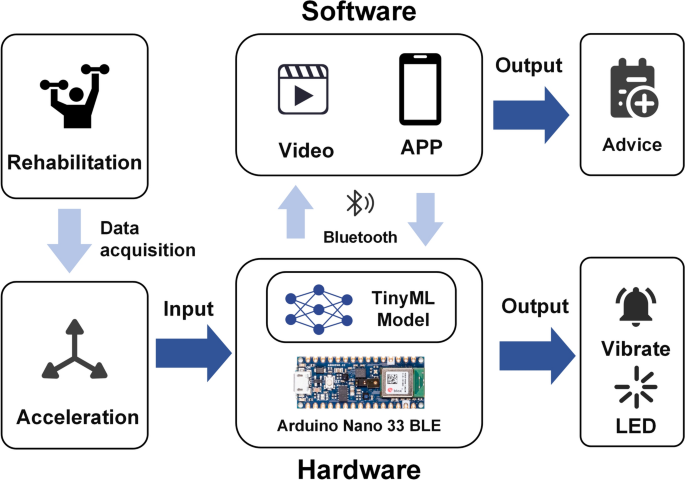Brilliantly Mapping AI In Healthcare
BLACKBURN, ENGLAND - MAY 14: A Doctor
Getty ImagesThere’s a lot going on inside the human brain, and for a while now, scientists have been trying to use AI to crack open this jewel of our central nervous system, and better understand how it works.
It’s been slow progress, partly because of the complexity and the very unique ways that the human brain processes information and responds to stimuli.
Nevertheless, we are making progress, and a recent panel on healthcare talked about the ways that clinical research is advancing based on AI systems modeling the brain.
Panelist Rekha Ranganathan talked about the robust ways that AI is contributing, and the 800+ applications that have been developed for radiology.
“For me, what is really interesting is: AI is really aiding diagnosis, and reporting, and helping our healthcare physicians get faster, better and more effective in patient outcomes, but not quite close yet in terms of what humans can do.”
Ed Boyden is an MIT professor. He talked about Alzheimer and Parkinson’s research, and using AI.
“Increasingly, we're trying to use our mapping and control tools to make maps of the brain so detailed that you could simulate the brain in the computer, and with molecular mechanistic information, we really would want to know, how does a molecule play a role in a emergent function or a disease state?” he said. “And so the hope is that we could really pinpoint where in the brain to intervene (for battling) brain disease.”
Anurang Revri works at Stanford, where they have been modeling proteins and doing other important clinical research.
“We support research education as well as clinical care,” he said. “So it's an interesting sort of place to be, where we have this kind of amazing research that we can translate into clinical workflows or external vendors and solutions. So that's sort of our focus, to implement the responsible AI life cycle.”
Jamie Metzl wrote the book “Superconvergence” that deals with the ramifications of new advances in our lives.
“What I'm focusing on is the transition of our healthcare system,” he said. “You're all familiar with the first jump from generalized medicine based on population averages, to personalized or precision health. And the next step is from precision to predictive and preventive, and all these other things, which is going to be the intersection of all the tools that we've been talking about, and the applications within healthcare.”
He also talked about structured classifications and challenges in mapping.
As moderator Juan Enriquez said, these are some of the most cited papers in science, working on diagnosis, as well as abstract things like people‘s thoughts and fears.
“What we are doing today is very much saying, based on what we know, on the basic physics of imaging, (how) a disease can be mapped, and then I think maybe a little bit of predictive focus on what is potentially likely to happen based on the imaging that the patient underwent in their 20s or 30s or 40s, if we have that longitudinal, you know, time mapping,” Ranganathan said.
Boyden talked about how microscopy works.
“With expansion microscopy, we can take a cell or a piece of tissue, and infuse it with basically the stuff you find in (physical systems) and add water, and we can make it bigger, subtracting all those building blocks of light,” he said. “And so the hope is that we can map those parts and how they touch. That is, in some ways, sort of the answer: the list of all the (mediating) interactions.”
Revri talked about “connecting all the dots” with healthcare solutions, and the importance of multimodal systems.
“When you start combining all those pieces of data and building models, multimodal models, around that, then it becomes a really powerful thing in clinical care,” he said.
“Somebody shows up with an image, and then somebody looks at the genetics, and somebody looks at the protein structures, and somebody looks at what's going on the firing of the brain. And that's really important in a time when 95% plus of central nervous system drugs fail, because we don't have the basic maps…. right? So we're trying to solve things without having maps.” – Juan Enriquez, moderator
“We don't have separate systems for our genetics and our epigenetics, and all these are shorthand classifications we use for ourselves. Our biology is integrated. It's a dynamic system of systems.” – Jamie Metzl
“If you're a patient, and you walk into a clinic, you're most likely getting an AI generated report, right? Mammography is one of those areas.” – Rekha Ranganathan
“The future is here, but right now, it really takes a lot of effort to get (access to the new tech), and the goal of everything is just to make this seamless, as you're already describing with the radiology, but really across the board. There are so many pain points. There are so many points where there are these really life-saving capabilities that not everybody has access to, and that's the connection between what we're talking about in healthcare, and everything that we're discussing here in AI, because there's so much cross learning between the different sectors.”
Part of what this panel showed me was that urgency that Enriquez talked about, in reforming our healthcare sector, but also the quick progress that we’re making in deciphering our own signals at a neurological level.
Will we win the race? And how will AI change healthcare in 2, in 5, in 10 years? We’ll see.










